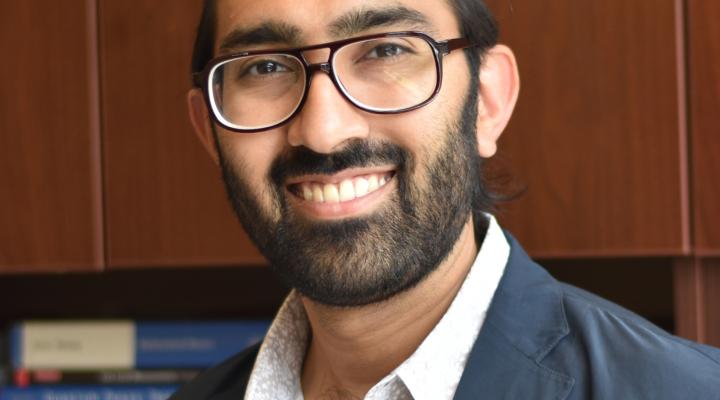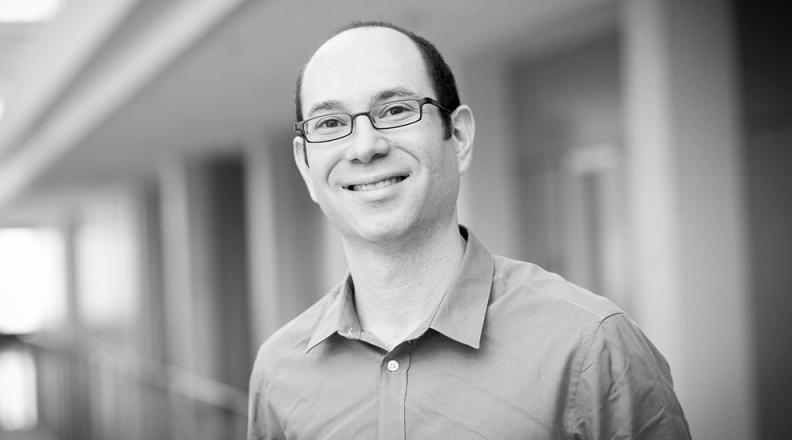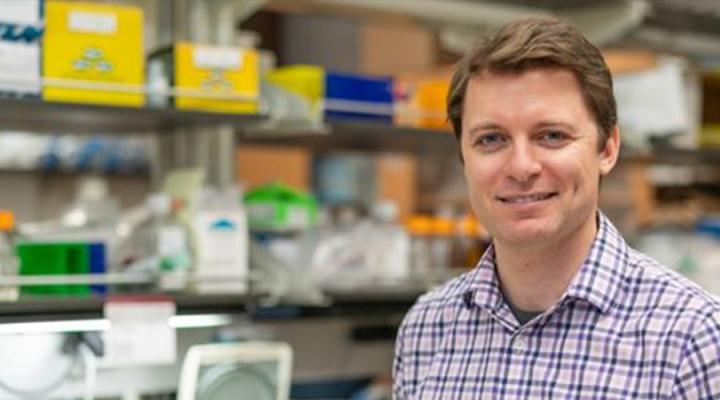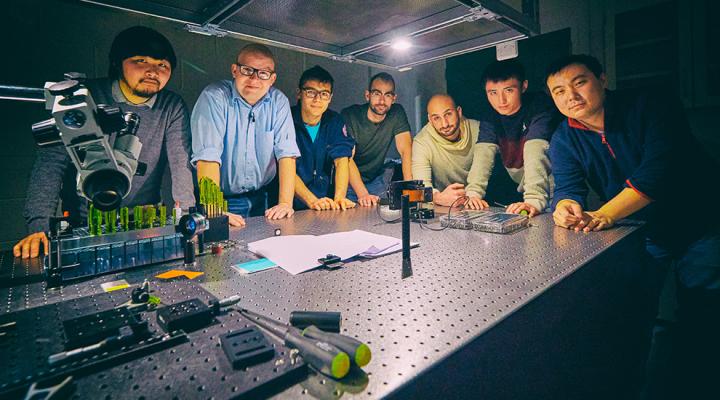Jeffrey Moses wants to look at things that can barely be seen; specifically, events that happen in under a trillionth of a second. This timescale, called a femtosecond, and the phenomena that occur within it, have been historically tough to study. “Being able to detect electronic changes in a femtosecond time scale has been a real challenge,” says Moses. “This field has been sort of impenetrable for both experimentalists and theorists.” But Moses, through the power of super-short bursts of light, aims to literally illuminate these mysteries.
Moses first became interested in the field of optics during a senior research project as an undergraduate applied physics major at Yale. This led to his pursuit of non-linear optics as a Ph.D. student at Cornell, where he studied with Frank Wise, now the Samuel B. Eckert Professor of Engineering in the School of Applied and Engineering Physics. As a graduate student, and later at the Massachusetts Institute of Technology as a post-doc and research scientist, Moses focused on developing tools to study what are known as ‘ultrafast phenomena.’
Those tools, specifically, are “the shortest optical pulses that we know of,” says Moses. He explains that quick light bursts have historically revealed insight to previously unviewable events. In the first half of the 20th century, investigators developed microsecond flash bulbs, with one researcher, Harold "Doc" Edgerton, using it to create iconic and groundbreaking images of miniscule moments frozen in time—such as a bullet going through an apple, or the first moments of a nuclear explosion. Moses is following in these footsteps, but instead of using regular strobe lights, he’s using lasers, which can generate even faster pulses with the potential to capture the coordinated movements of electronic and nuclear particles.
Being able to observe these movements has practical uses. “One great example of such phenomena is the damage that can be done to DNA by ultraviolet light,” says Moses. When UV light hits human DNA, it excites the electrons belonging to the molecules. While normally the molecules are able diffuse that energy, there are cases where, rather than diffusing, the energy causes two DNA base pairs to fuse together and create an unreadable ‘blank’ in the genetic code. “That’s a form of mutagenesis,” says Moses, which can be the first step towards cancer. That crucial moment, in which that extra energy from the light causes the molecule to either diffuse or dimerize, is thought to occur in just a few femtoseconds—a moment that would be helpful to observe.
Similarly crucial ultrafast phenomena occur in the human vision response, when a photon excites a bond within the rhodopsin receptor, changing the actual shape of the molecule. That fraction of a moment in which the molecule redirects the energy imparted by the photon is the first link in a chain of events that causes our brains to recognize visual stimuli. “To me, that’s astonishing that something so fast can have such a far-reaching biological effect,” says Moses.
Moses plans to study ultrafast phenomena in biological systems, as well as material systems such as the charge separation that occurs in solar cells. “The precision or resolution by which you can examine these things depends on the tools you have available,” says Moses. “By continuing to improve these tools, we can start to see even more rapid phenomena.”
Prior to being hired as a faculty member at Cornell, Moses worked primarily on developing these tools—pushing the boundaries on the shortest possible pulses of light, or combining different pulses of light in different wavelengths. “Now that I’m at Cornell, the focus will be on using these tools,” he says. “First we want to see if we can detect these ultra-fast changes in real time, and second, we want to figure out how important these events are in determining behaviors of materials and molecules.”
Returning to Cornell after leaving it for eight years “feels great,” says Moses. “There are memories around every corner on campus, and around the town of Ithaca.” Beyond the nostalgia, he says he chose to join Cornell’s faculty because of the nature and reputation of the applied physics school. “It pulls together people with cross-disciplinary interests, but who share a common understanding of things,” says Moses. “And, overall, Cornell is just a great institution for collaboration.”





